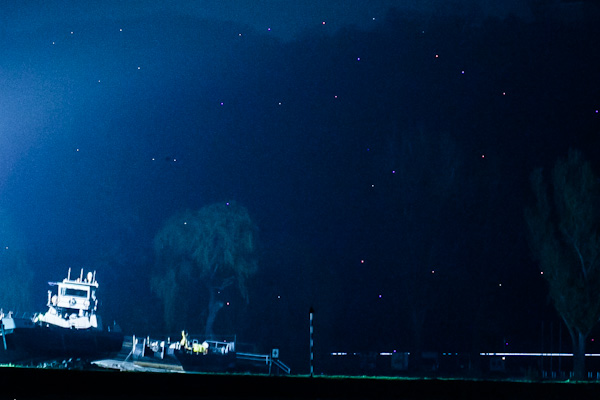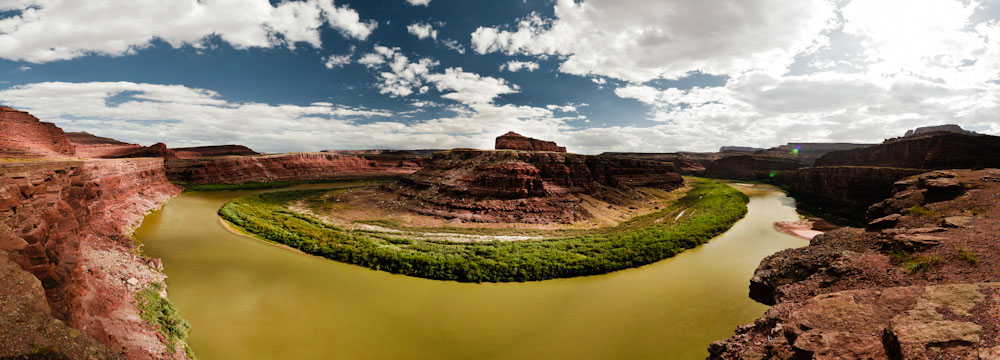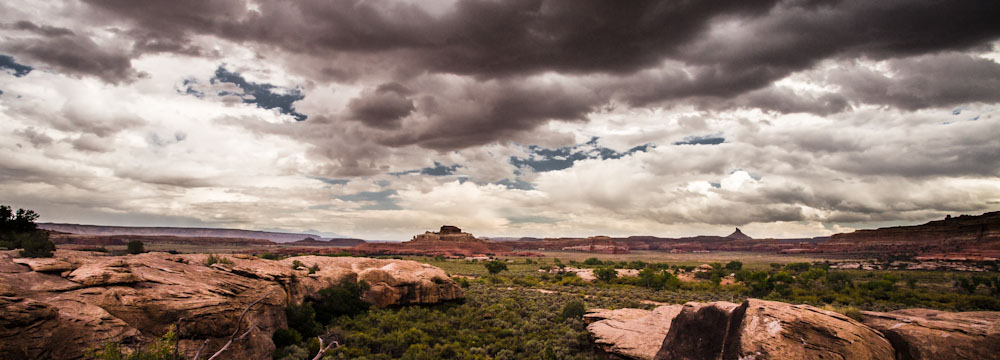
This is a crop, please click the image for the full version
This is what my 3 year old 5D Mark II does when I take a 30 second exposure at ISO 800. These are not stars, these are hot pixels, and there are plenty of them.
The above picture is a crop, click here for the full version of this picture (and with it many more hot pixels).
Three years ago, when the camera was new, it had maybe two of them. Now I don’t even know how many there are. My guess is hundreds.
Radiation
The reason for the dramatic increase in hot pixels isn’t the age of the sensor. The reason is that I have taken the camera onto at least 12 intercontinental flights, and the radiation exposure that the camera gets during those is strong enough to kill (or light up) individual pixels.
There are two main sources of radiation that the camera gets exposed to: the x-ray machine at airport security and cosmic radiation. I believe the high energy cosmic radiation is far worse than the x-rays, but I didn’t study physics, so please correct me if I’m wrong.
Auto Correction
Is this a problem for me? Not really. First of all I don’t typically shoot 30 seconds at ISO 800. Also, I processed the image in Lightroom, which has an automatic hot pixel correction built in. A hot pixel is easy to detect in a regular RAW file, as the neighboring pixels are not affected. I assume the way this algorithm works is that Lightroom simply replaces the hot pixel with one of its neighbors and that’s that.
sRAW
The only reason these pixels show up in the above picture is that I shot it as a 9.9 megapixel sRAW file. sRAW is Canon’s format for smaller RAW files, and to make one, the camera basically interpolates the original RAW file down to a smaller size. The fact that it’s interpolated has an interesting side effect though: the hot pixels will get slightly blurred. The result of that is that Lightroom’s hot pixel detection will simply not see them.
And as a result of that, my high-ISO-long-exposure-sRAW-night-shots will show me an (albeit down-sampled) version of the mess that is my camera’s beaten-up sensor.
On the other hand that also means that if I shoot regular (non-interpolated) RAW format, Lightroom’s hot pixel detection will work just fine and if push comes to shove (e.g. if I have to shoot high-ISO-long-exposure-night-shots) a couple of hundred pixels will be happily replaced with their intact neighbors. A couple of hundred out of 21 million that is. That is about 0.01 percent. I think I can live with that for now.
Just keep in mind that your camera’s sensor will clearly suffer if you fly a lot. Not that you’ll typically notice.
As Bad As Film
Digital is no better than film in that respect. Remember the lead bags photographers used to put their film in so the x-ray machines didn’t expose it?
Here’s a thought: Maybe we should start putting our cameras into lead bags too.
Do you know if a film lead bag will protect the camera from x-rays and cosmic radiation? (My gut says: yes to the former, no to the latter)
Oh, and now you also know the reason, cameras get shipped from the overseas factories (shipped as in: ship, not airplane) and not flown.
[sc:workshops]



